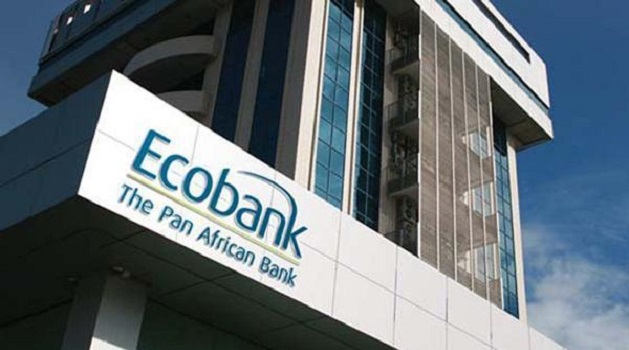General News
Looking in to 2014: Need for Speed in e-Commerce World

As we are leaving 2013, heading for 2014, e-commerce is under heavy expansion in Nigeria and the rest of Africa.
A growing number of online consumers will put pressure on e-commerce sites’ functionality. Web performance expert Sven Hammar, CEO of Apica, gives his best advice on how to avoid being the e-retailer who throws the customers out on the street in 2014.
New technology has put e-commerce in a constant growth. Feeling more secure and accustomed to shopping online, more consumers are turning online for their essential shopping. Increased creativity and the rapid development among e-commerce retailers with expanding loyalty programs and promotions also play an important role in this process.
Forrester predicts that the average shopper will spend $1,738 annually by 2016, compared with $1,207 in 2011.
The same institute also claims that the estimated increased figures in sales will largely be contributed from existing online shoppers.
Increased promotional sales and the fact that each consumer makes more transactions will not reduce the pressure on the e-commerce sites.
On the contrary. This leads to increased pressure on e-commerce sites. E-commerce companies really need to take in to consideration what impact on the web sites’ performance and functionality a sudden growth of visitors and transactions may result in. An ill-prepared e-shopping site could lose customers very quickly.
Picture yourself doing a supposedly quick online shopping errand during lunch. When something that should take a few minutes ends up taking your entire lunch hour because of a slow website, you lose patience quickly. You would probably regard it as unacceptable, as probably most of your customers. But that situation can easily be avoided. Here are six ideas on how ro to optimize desktop and mobile website performance:
1. Minimize or remove Flash. Flash is bulky and is often not worth the added limited benefits. Flash is also incompatible with most mobile devices so a big chunk of your visitors may be unable to view the content anyway. If you cannot eliminate it completely, minimize it.
2. Optimize images. Keeping images in their full size consumes a lot of bandwidth as they load so resize them whenever possible.
Also, change the format and optimize them for the web. Sometimes there is extra space or padding around graphics to separate it from text or other elements, but consider cropping that out and using CSS to create the padding.
Fine-tune image settings in programs with that option because reducing the colour palette from 256 to 32 greatly reduces file size. And finally, decrease the quality setting, since reducing them to 80 or 90 percent will not show any significant difference from the original.
3. Do not embed external media. Eliminate links to videos hosted on other sites because your pages will only run as fast as theirs.
If it is really good and beneficial to reference, host it on your own site whenever possible so you are not relying on another website’s performance.
4. Consider utilizing a content delivery network. A CDN is a system of servers networked across the Internet and designed to serve up content closer to end users, shortening the delivery cycle and decreasing page load times.
This improves scalability and efficiency but more importantly, it provides a better user experience for your site visitors. When users abandon sites after waiting a mere two seconds or less, it is an option worth considering.
5. Choose the best web host for your business. Do not stick with a host provider overloaded with thousands of other sites, slowing yours down, just because you have been with them for a long time.
Your host needs to understand your organization and its requirements, including performance, availability, security and more, so in order to keep up with business demands and continually evolve, make sure they are continually delivering on their promises.
6. Conduct load testing and monitor your site regularly for performance dips and spikes. Address the dips with code and content changes.
If you have a proactive load testing and monitoring plan in place, you have a better chance of avoiding the site abandonment issue described earlier.
by Sven Hammar, CEO, Apica
Sven Hammar is founder and CEO of Apica, a provider of load testing and performance monitoring for cloud and mobile applications and one of Europe’s fastest growing technology companies (Deloitte’s ”Fast 500” list). Mr. Hammar is a serial entrepreneur who has founded several successful IT companies. See http://www.apicasystem.com/
General News
Ecobank Guarantees Seamless Digital Banking Services Throughout the Christmas and Year-End Period

Ecobank Nigeria, a member of Africa’s leading pan-African banking group, has assured customers of uninterrupted access to banking services throughout the year-end holiday period via its secure and robust digital platforms. The Bank also urged customers to remain vigilant against fraud and scams during the festive season.

Ecobank Bank
Speaking on the development, Victor Yalokwu, Head, Products & Analytics, Consumer & Commercial Banking, Ecobank Nigeria, said the Bank’s digital channels – including the Ecobank Mobile App, Ecobank Business App, USSD *326#, Ecobank Online, OmniPlus, Omnilite, EcobankPay, RapidTransfer, Ecobank Cards, ATMs, PoS terminals, and over 35,000 Ecobank Xpress Point (Agent Banking) locations nationwide – will remain fully available to support customers throughout the yuletide and year-end holiday period.
He noted that customers will continue to enjoy a wide range of services during the period, including local and international funds transfers, bill payments and airtime top-ups, merchant payments, balance inquiries and account statements, as well as cardless cash withdrawals via ATMs.
According to Yalokwu, “Ecobank encourages customers to leverage these digital solutions for safe, fast, and efficient banking, especially during the festive season when convenience and reliability are essential.
“While physical branch operations may be subject to adjusted working hours in line with public holidays, customers can be assured that Ecobank’s digital platforms are designed to deliver uninterrupted service and enhanced security at all times.
“Ecobank remains committed to providing innovative financial solutions and exceptional customer service, and we wish all our customers a joyful festive season and a prosperous New Year.”
Yalokwu also cautioned customers to remain vigilant against fraudsters and scammers during the period. “Before you wrap up the year, tighten your security. December brings online sales, travel, and year-end distractions—this is exactly when scammers are most active. From fake festive deals to cloned merchant sites and suspicious messages, staying vigilant helps keep your money safe.”
He advised customers to shop only on trusted websites, never share their PINs, passwords, or one-time passwords (OTPs), avoid banking on public Wi-Fi networks, be cautious of urgent or emotionally charged messages, and regularly review their account activity.
General News
Woherem Proposes Pragmatic Roadmap to End Terrorism and Banditry in Nigeria

Dr. Evans Woherem, an award-winning African technology researcher, analyst, and writer, has proposed a comprehensive and implementable strategy to end terrorism, banditry, and criminal violence in Nigeria, warning that the country’s prolonged insecurity has reached a critical point that demands urgent, coordinated action.

Titled “A Comprehensive Strategy for Ending Terrorism, Banditry, and Criminal Violence in Nigeria: A Pragmatic, Multi-Layered, and Implementable Framework,” the paper presents a holistic roadmap designed to reverse more than a decade of escalating violence that has claimed thousands of lives, displaced communities, weakened local economies, and eroded public trust in governance.
According to him, insecurity has become deeply entrenched in everyday life across the country. “Terrorism, banditry, and criminal violence have become so commonplace that they now dominate daily conversations among Nigerians,” Dr. Woherem noted, adding that while the crisis is most acute in the North-East, North-West, and North-Central regions, “its effects are now being felt even in the southern parts of the country.”
Citing the 2025 Global Terrorism Index, which ranks Nigeria sixth globally in terms of terrorism impact, Dr. Woherem described the ranking as “a sobering statistical confirmation that terrorism still weighs heavily on the Nigerian state.”
The paper traces the roots of the crisis to the emergence of Boko Haram in 2009 and the subsequent rise of splinter groups such as ISWAP. It recalls high-profile incidents including the 2014 abduction of schoolgirls in Chibok, the Dapchi and Kankara kidnappings, and a series of mass abductions and attacks on schools and places of worship recorded in 2025.
Dr. Woherem observed that banditry, largely driven by ransom payments, “has spread across the entire nation, creating fear, weakening productivity, and pushing millions of households deeper into poverty.”
While acknowledging the role of military action, the author cautioned against relying on force alone. “Nigeria cannot defeat insurgency and violent crime through arms and ammunition alone,” he said. “Any sustainable solution must confront the internal conditions that allow insecurity to thrive.”
Among the key drivers identified in the paper by Dr. Woherem, are porous borders, arms proliferation, youth unemployment, economic stagnation, and persistent conflicts over land and resources, challenges Dr. Woherem stressed can be addressed through “a deliberate, intelligence-led, and whole-of-society approach.”
At the heart of the proposed framework, Woherem noted, is a call for intelligence-driven security operations, including the establishment of a National Counter-Insurgency and Intelligence Fusion Centre. “Security operations must be guided by accurate, actionable intelligence rather than fear-led mass actions that often harm civilians and undermine public trust,” he stated.
The paper also advocates comprehensive policing reforms, including the creation of constitutionally backed state police systems supported by a more specialized federal police structure. “Nigeria’s over-centralised policing model is structurally incapable of effectively addressing widespread criminality across such a vast and diverse country.”
Recognising the realities at the grassroots, Woherem calls for the formal regulation of community-based security groups, and noted that “ignoring vigilante groups is dangerous, and banning them outright is unrealistic,” but stressed that their roles must be clearly defined, regulated, and subject to strict oversight.
On border security, particularly in the Lake Chad Basin, the author warned that instability in neighbouring countries continues to fuel Nigeria’s insecurity. “No permanent solution is possible without deep regional cooperation,” he said, advocating an Integrated Border Management system supported by joint operations with neighbouring states.
The paper places strong emphasis on prevention through economic inclusion, youth employment, and skills development. “Jobs and income remain the most powerful tools for preventing recruitment into violent groups,” Dr. Woherem asserted, adding that immediate livelihood opportunities significantly weaken the appeal of extremist narratives.
He also called for structured deradicalisation and reintegration programmes, noting that “a humane, community-accepted process is essential for breaking cycles of violence and preventing relapse into extremism.”
Dr. Woherem further emphasised the need for governance reforms and accountability in the security sector. “Without transparency, oversight, and institutional integrity, even the best security strategies will fail,” he warned.
The white paper outlines a phased implementation plan from 2025 to 2030, beginning with intelligence fusion, pilot state police initiatives, community security registration, drone surveillance, and financial crackdowns on terror networks, before expanding into nationwide reforms and long-term consolidation.
Concluding, Dr. Woherem expressed cautious optimism about Nigeria’s future. “Nigeria can overcome this prolonged phase of insecurity,” he said, “but only through political will, coordinated institutions, and the active participation of society.”
He added that the proposed framework offers “a realistic pathway to restoring security, rebuilding public trust, and unlocking Nigeria’s vast human and economic potential.”
General News
REDAN Seals Landmark MoU, Validates Sytemap’s Real Estate Infrastructure

In a market where less than 3% of land is formally registered and property fraud remains systemic, infrastructure, not apps, is becoming the defining battleground for real estate innovation.

L-R: Ndifreke Ikokpu, COO, Sytemap, HRM Oba Akintoye Adeoye, President REDAN & Cholatte Odunlade-Akeji, Director, RightHome
That reality came into sharp focus on December 18, 2025, as the Real Estate Developers Association of Nigeria (REDAN) signed a Memorandum of Understanding (MoU) with Sytemap Technologies Limited, signaling a major industry endorsement of Sytemap’s land and real estate transaction infrastructure.
The partnership centers on RightHOME, a jointly developed digital real estate platform powered by Sytemap’s secure cloud infrastructure, mapping systems, transaction monitoring, and fraud-prevention architecture, with REDAN driving ecosystem adoption through its nationwide developer network.
Nigeria’s real estate sector processes transactions worth trillions of naira annually, yet remains heavily manual, fragmented, and vulnerable to disputes. Industry data suggests unresolved title issues alone lock up ₦36 trillion in dead capital, limiting access to finance and slowing development.
“This MoU represents a shift from fragmented digitization to coordinated infrastructure,” said Nnamdi Uba, CEO at Sytemap. “When the industry body itself aligns around shared standards, verification, and technology, innovation can finally scale responsibly.”
Under the agreement:
· REDAN will onboard registered developers and promote adoption of the platform as a trusted digital channel.
· Sytemap will deliver secure hosting, real-time monitoring, escrow-aligned transaction workflows, and compliance with Nigeria’s data protection regulations.
· Joint standards will be developed for digital verification, transparency, and asset mapping.
From a technology perspective, the partnership reflects a growing consensus that solving African real estate challenges requires deep infrastructure, not surface-level marketplaces. Fraud detection, uptime reliability, auditability, and regulatory alignment, areas often overlooked in proptech, are central to Sytemap’s approach.
HRM Oba Akintoye Adeoye, representing REDAN noted, “This collaboration allows developers to operate in a system where trust is embedded, not assumed. That is critical for long-term growth.”
For the broader tech ecosystem, the MoU stands out as a rare example of industry-led validation, where a national association formally aligns with a technology provider to modernize an entire sector.
Ndifreke Ikokpu, COO at Sytemap signed on behalf of Sytemap while Cholatte Odunlade – Akeji, CEO of RightHome signed on behalf of the Special Purpose Vehicle.
As pressure mounts to unlock housing finance, attract institutional capital, and reduce transaction risk, the REDAN–Sytemap partnership positions digital land infrastructure not as an optional upgrade, but as a foundational requirement for the future of real estate in Nigeria.

 General News3 days ago
General News3 days agoWoherem Proposes Pragmatic Roadmap to End Terrorism and Banditry in Nigeria

 News2 days ago
News2 days agoFIRS Declares NIN, CAC Numbers as Tax IDs from 2026

 E-Financial2 days ago
E-Financial2 days agoWorld Bank Reveals Obstacles to Growth of Mobile Money Accounts in Sub-Saharan Africa

 Telecom2 days ago
Telecom2 days agoNCC Ranked Among Top 3 MDAs for Best Website Performance in 2025

 Telecom1 day ago
Telecom1 day agoNigeria’s Internet Usage Hits 1.24m Terabytes – NCC

 E-Financial8 hours ago
E-Financial8 hours agoBanks quietly move to enforce new ₦50 transfer levy from Jan. 1

 General News8 hours ago
General News8 hours agoEcobank Guarantees Seamless Digital Banking Services Throughout the Christmas and Year-End Period






















